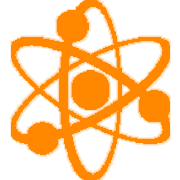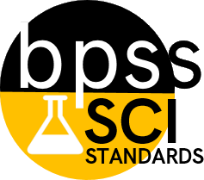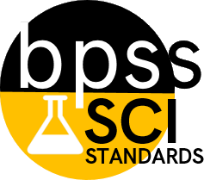High School Science
 (PS) Physical Science
(PS) Physical Science
[HS-PS1]Matter
and Its
Interactions
[HS-PS2]
Motion and Stability:
Forces and Interactions
[HS-PS3]
Energy
[HS-PS4]
Waves and
Their Applications
in Technologies for
Information Transfer.
S |
|---|
SCI-HS.PS3.05
SCI-HS.PS3.05 Develop and use a model of two objects interacting through electric or magnetic fields to illustrate the forces between objects and the changes in energy of the objects due to the interaction.
Clarification Statement: Student Learning Targets:Knowledge Targets
Reasoning Targets
Skills (Performance) Targets
Product Targets
Proficiency ScaleThe Student can ...1 Beginning... with help, demonstrate a partial understanding of some of the simpler details and processes (Score 2.0 content) and some of the more complex ideas and processes (Score 3.0 content).
2 Developing... demonstrate no major errors or omissions regarding the simpler details and processes but exhibits major errors or omissions regarding the more complex ideas and processes (Score 3.0 content).
3 Proficient“The Standard.”... demonstrate no major errors or omissions regarding any of the information and processes that were end of instruction expectations.
4 Advanced... demonstrate in-depth inferences and applications regarding more complex material that go beyond end of instruction expectations.
ResourcesVocabulary
Websites
| |
SCI-HS.PS4
| |
SCI-HS.PS4.01
SCI-HS.PS4.01 Use mathematical representations to support a claim regarding relationships among the frequency, wavelength, and speed of waves traveling in various media.
Clarification Statement: Physical Science/Physics: Examples of data could include electromagnetic radiation traveling in a
vacuum and glass, sound waves traveling through air and water, and seismic waves traveling
through the Earth.
Student Learning Targets:Knowledge Targets
Reasoning Targets
Skills (Performance) Targets
Product Targets
Student "I can" statements are embedded within the proficiency scale. Proficiency Scale
ResourcesWebsites Vocabulary | ||||||||||||||||||||||||||||||||||||||||
SCI-HS.PS4.02
SCI-HS.PS4.02 Evaluate the claims, evidence, and reasoning behind the idea that electromagnetic radiation can be described either by a wave model or a particle model, and that for some situations one model is more useful than the other.
Clarification Statement: Physics: Emphasis is on the idea that photons associated with different frequencies of light have
different energies, and the damage to living tissue from electromagnetic radiation depends on the
energy of the radiation. Examples of published materials could include trade books, magazines,
web resources, videos, and other passages that may reflect bias. Quantum theory does not need
to be included.
Student Learning Targets:Knowledge Targets
Reasoning Targets
Skills (Performance) Targets
Product Targets
Proficiency ScaleThe Student can ...1 Beginning... with help, demonstrate a partial understanding of some of the simpler details and processes (Score 2.0 content) and some of the more complex ideas and processes (Score 3.0 content).
2 Developing... demonstrate no major errors or omissions regarding the simpler details and processes but exhibits major errors or omissions regarding the more complex ideas and processes (Score 3.0 content).
3 Proficient“The Standard.”... demonstrate no major errors or omissions regarding any of the information and processes that were end of instruction expectations.
4 Advanced... demonstrate in-depth inferences and applications regarding more complex material that go beyond end of instruction expectations.
ResourcesVocabulary
Websites
| |
SCI-HS.PS4.03
SCI-HS.PS4.03 Evaluate the validity and reliability of claims in published materials of the effects that different frequencies of electromagnetic radiation have when absorbed by matter.
Clarification Statement: Physics: Emphasis is on the idea that photons associated with different frequencies of light have
different energies, and the damage to living tissue from electromagnetic radiation depends on the
energy of the radiation. Examples of published materials could include trade books, magazines,
web resources, videos, and other passages that may reflect bias. Focus is on qualitative
descriptions.
Student Learning Targets:Knowledge Targets
Reasoning Targets
Skills (Performance) Targets
Product Targets
Student learning targets are embedded in the proficiency scales. Proficiency Scale for Quantum Theory (Chemistry)
ResourcesWebsites Vocabulary | ||||||||||||||||||||||||||||||||||||
SCI-HS.PS4.04
SCI-HS.PS4.04 Communicate technical information about how some technological devices use the principles of wave behavior and wave interactions with matter to transmit and capture information and energy.
Clarification Statement: Physics: Examples could include solar cells capturing light and converting it to electricity; medical
imaging; and communications technology. Focus in on qualitative information and does not
include band theory
Student Learning Targets:Knowledge Targets
Reasoning Targets
Skills (Performance) Targets
Product Targets
Student learning targets are embedded in the proficiency scales. Proficiency Scale for Quantum Theory (Chemistry)
ResourcesWebsites Vocabulary | ||||||||||||||||||||||||||||||||||||
SCI-HS.PS4.05
Student Learning Targets:Student "I can" statements are embedded within the proficiency scale. Proficiency Scale (Physical Science)
ResourcesWebsites Vocabulary | ||||||||||||||||||||||||||||||||||||||||||||


 DCI Physical Science PS4
DCI Physical Science PS4